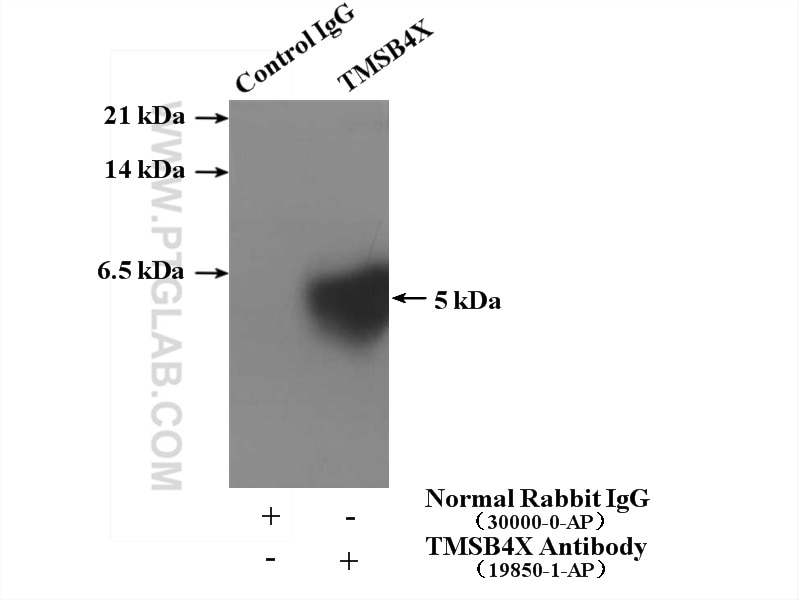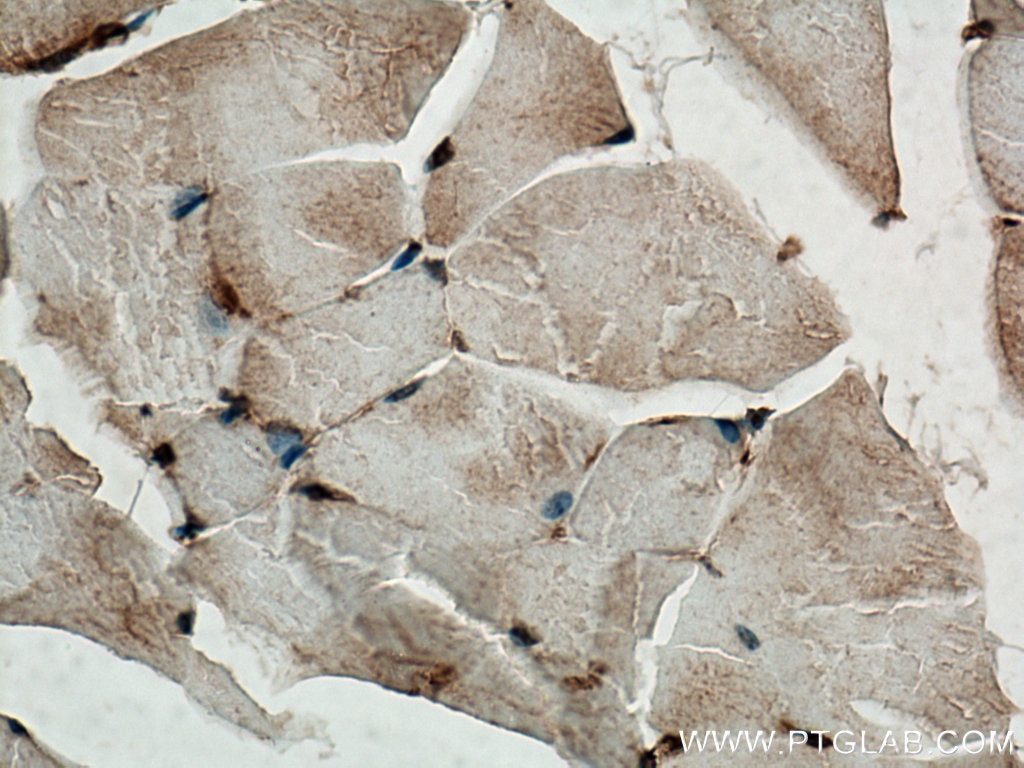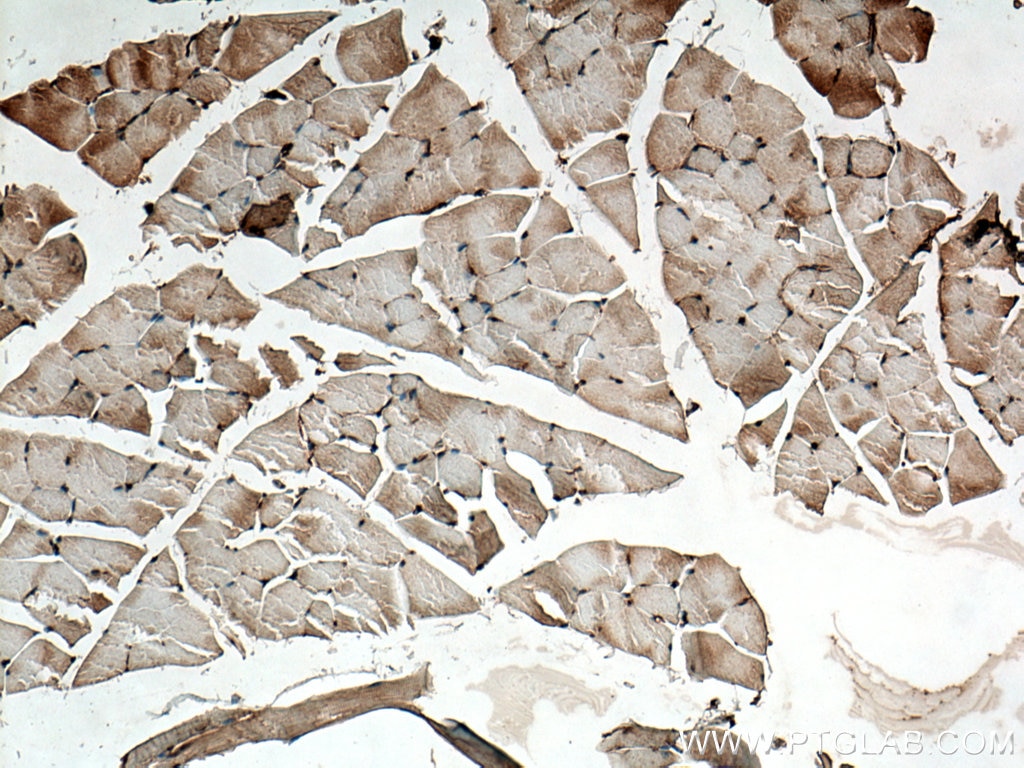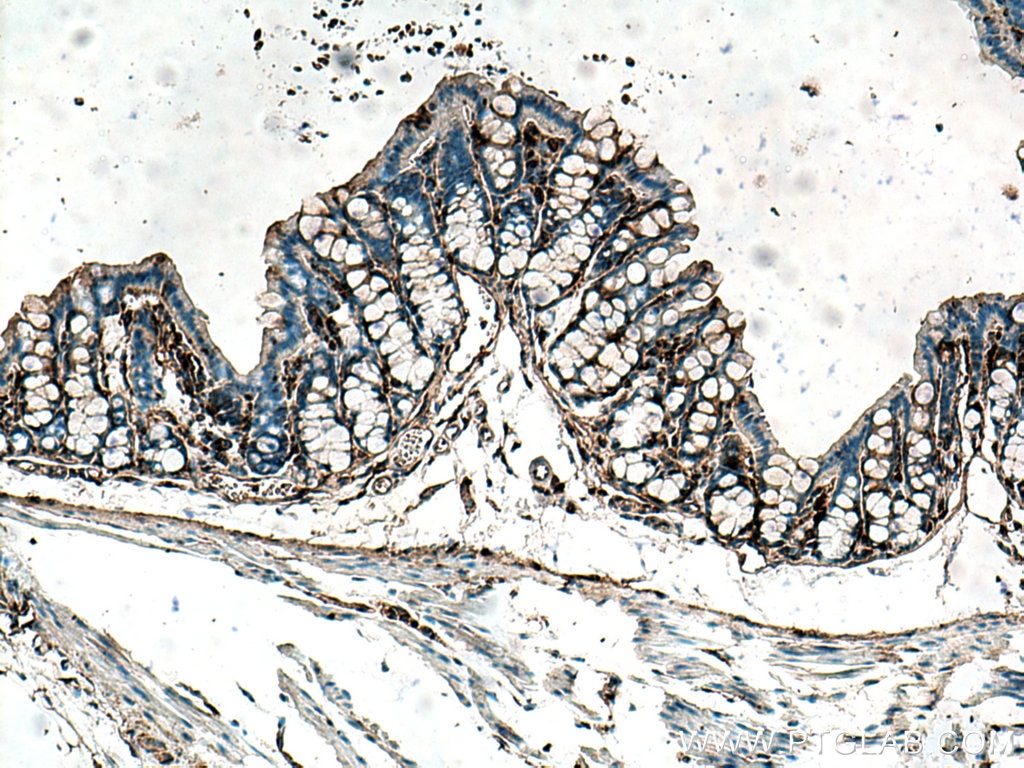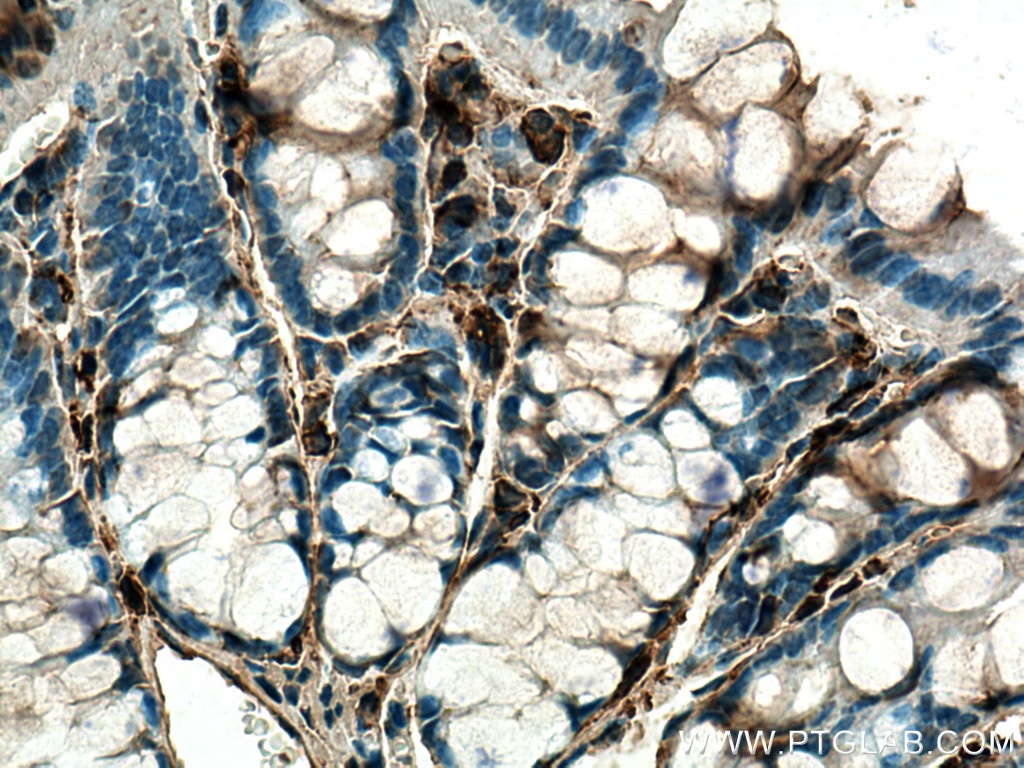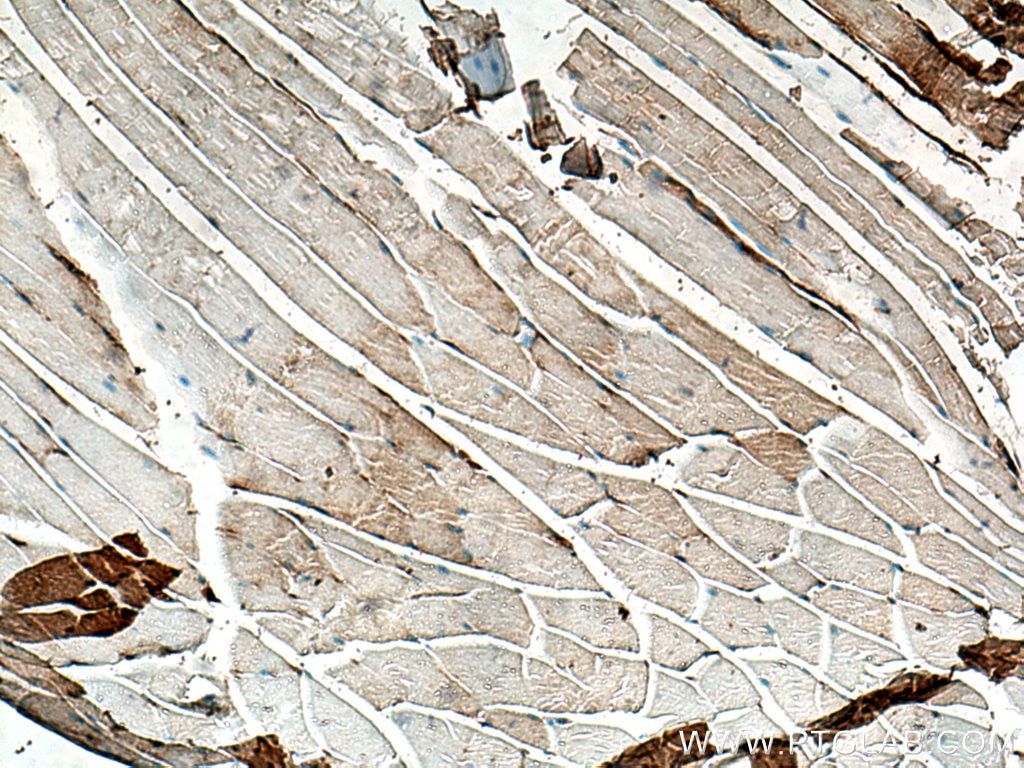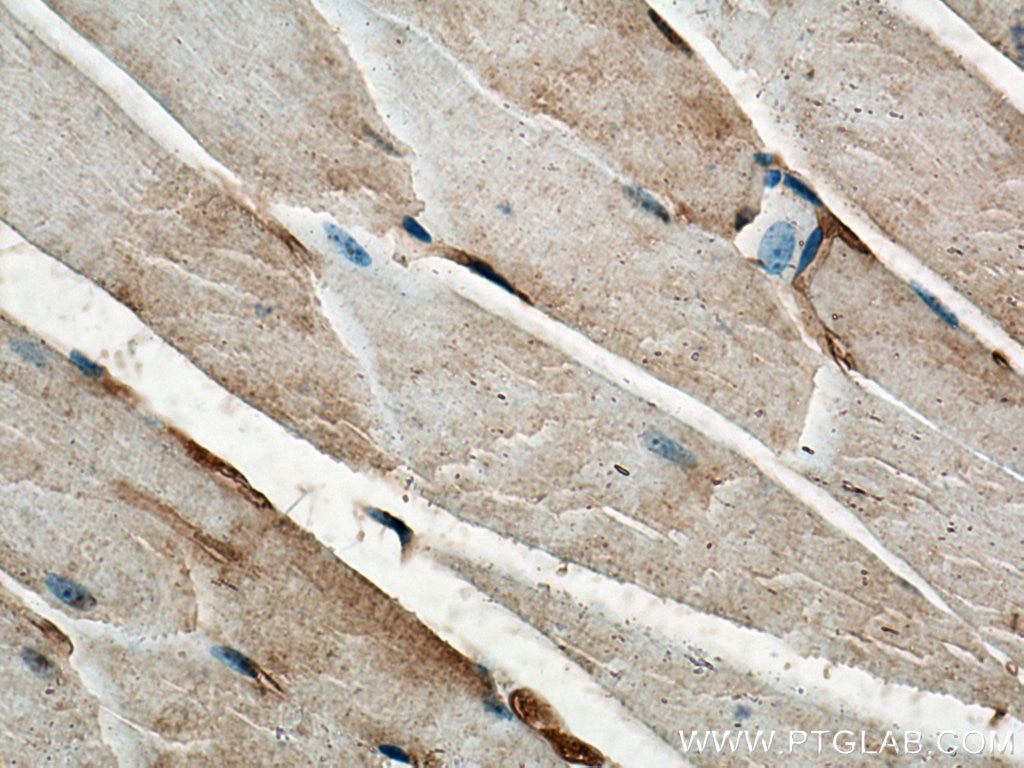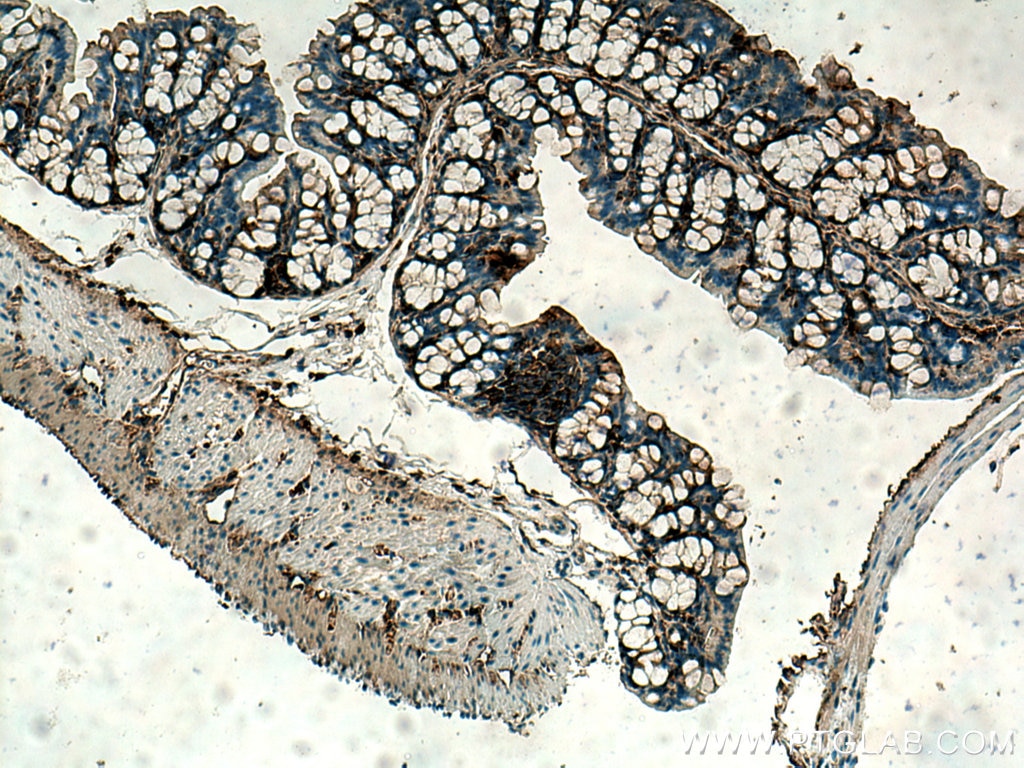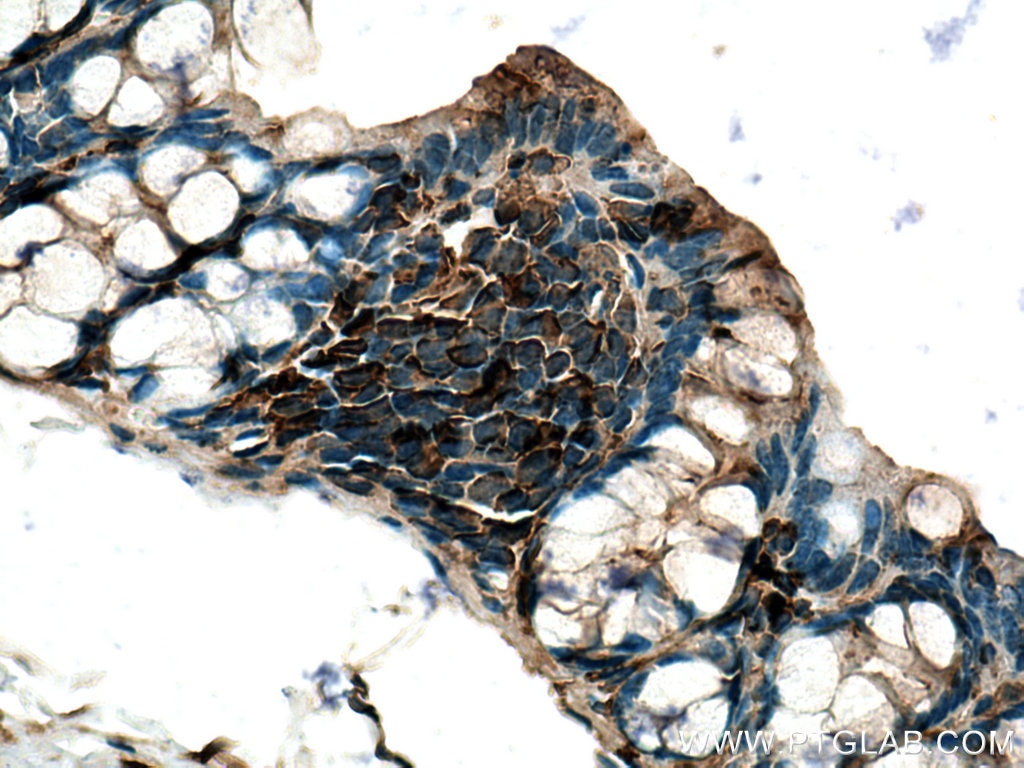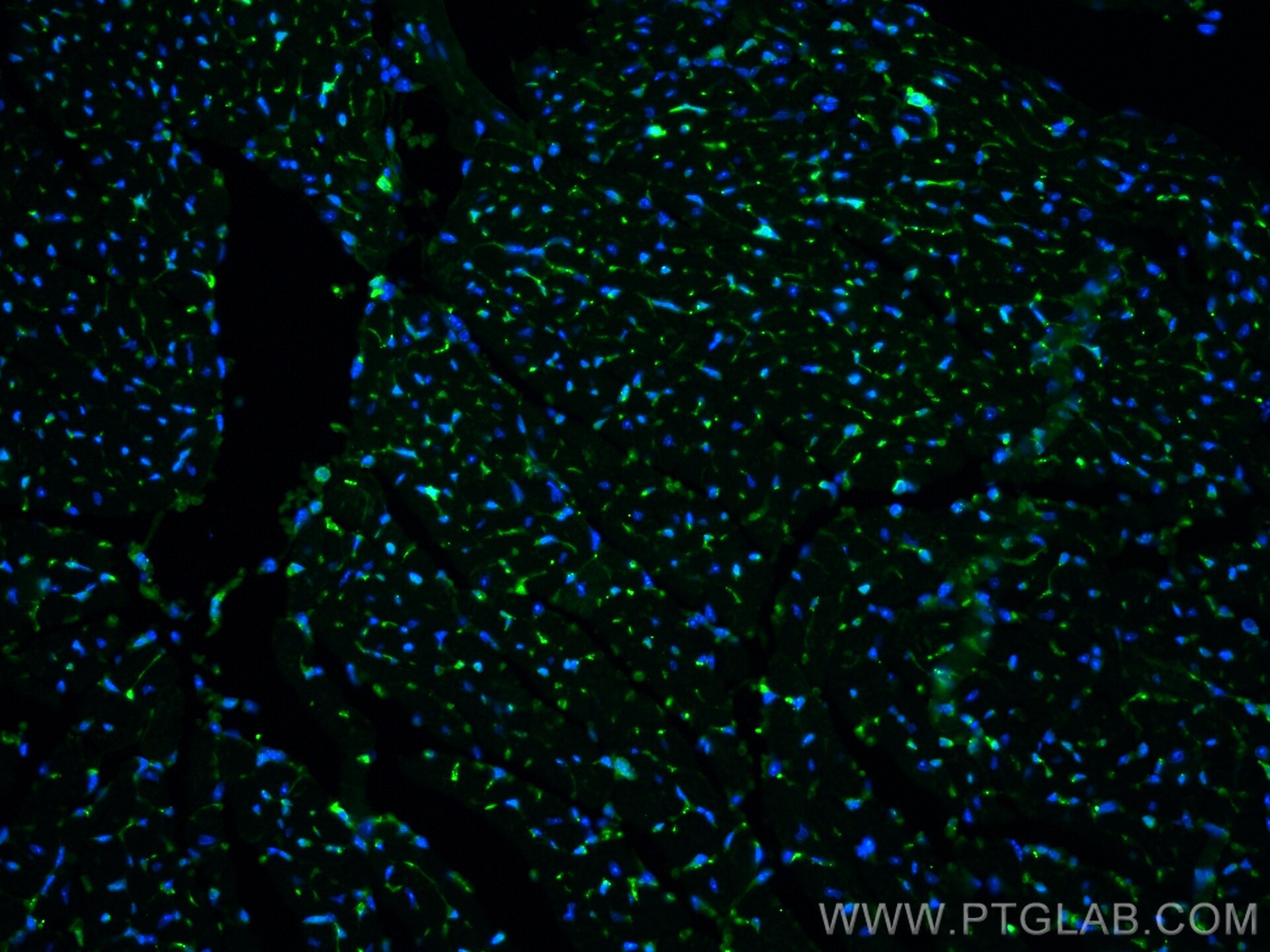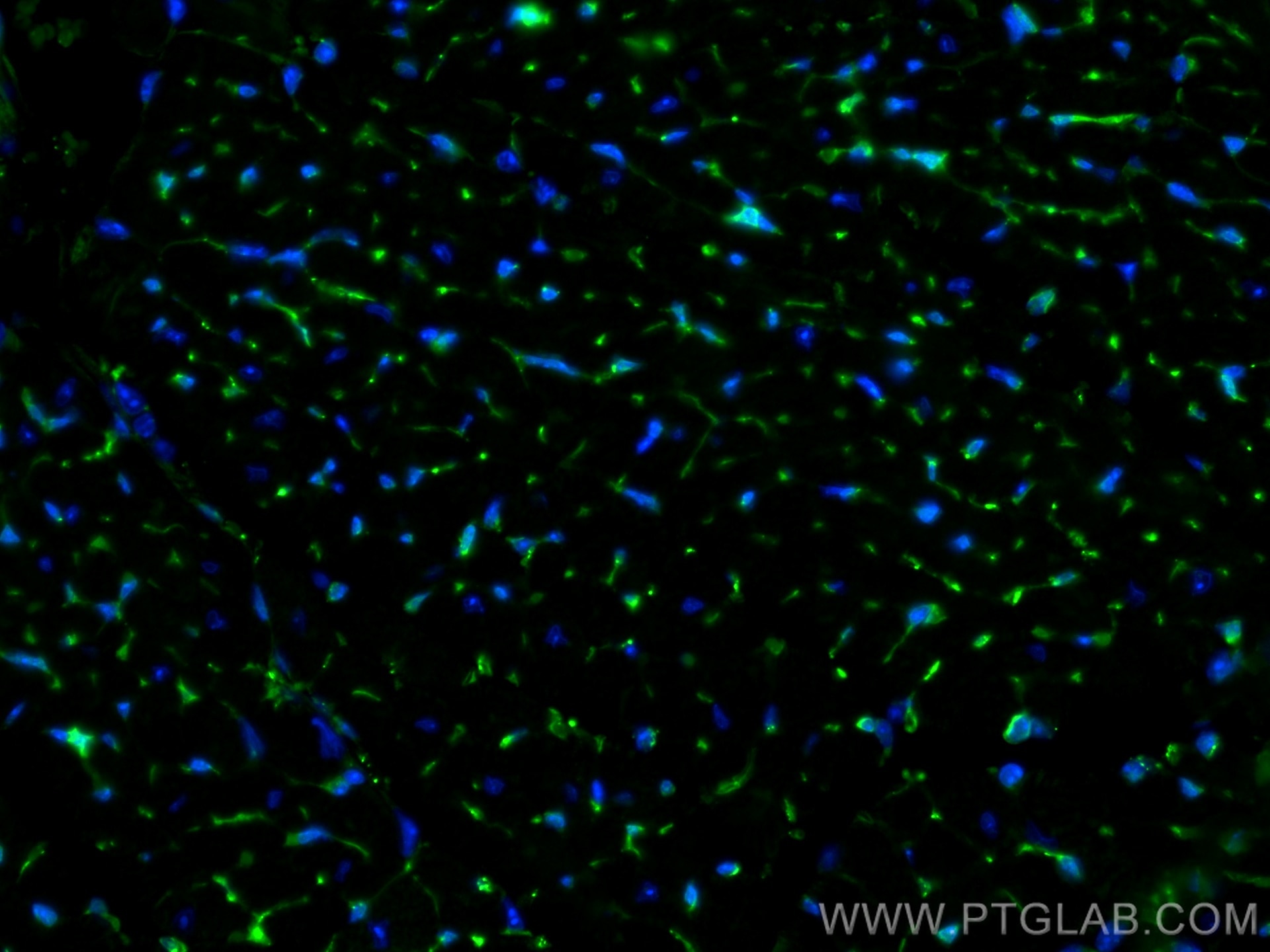- Phare
- Validé par KD/KO
Anticorps Polyclonal de lapin anti-Thymosin beta 4
Thymosin beta 4 Polyclonal Antibody for IHC, IF-P, IP, ELISA
Hôte / Isotype
Lapin / IgG
Réactivité testée
Humain, rat, souris et plus (1)
Applications
WB, IHC, IF-P, IP, ELISA
Conjugaison
Non conjugué
N° de cat : 19850-1-AP
Synonymes
Galerie de données de validation
Applications testées
| Résultats positifs en IP | tissu de muscle squelettique de souris |
| Résultats positifs en IHC | tissu de muscle squelettique de souris, tissu de côlon de souris il est suggéré de démasquer l'antigène avec un tampon de TE buffer pH 9.0; (*) À défaut, 'le démasquage de l'antigène peut être 'effectué avec un tampon citrate pH 6,0. |
| Résultats positifs en IF-P | tissu cardiaque de souris, |
Dilution recommandée
| Application | Dilution |
|---|---|
| Immunoprécipitation (IP) | IP : 0.5-4.0 ug for 1.0-3.0 mg of total protein lysate |
| Immunohistochimie (IHC) | IHC : 1:50-1:500 |
| Immunofluorescence (IF)-P | IF-P : 1:400-1:1600 |
| It is recommended that this reagent should be titrated in each testing system to obtain optimal results. | |
| Sample-dependent, check data in validation data gallery | |
Applications publiées
| KD/KO | See 2 publications below |
| WB | See 11 publications below |
| IHC | See 6 publications below |
| IF | See 4 publications below |
Informations sur le produit
19850-1-AP cible Thymosin beta 4 dans les applications de WB, IHC, IF-P, IP, ELISA et montre une réactivité avec des échantillons Humain, rat, souris
| Réactivité | Humain, rat, souris |
| Réactivité citée | Humain, poulet, souris |
| Hôte / Isotype | Lapin / IgG |
| Clonalité | Polyclonal |
| Type | Anticorps |
| Immunogène | Thymosin beta 4 Protéine recombinante Ag13914 |
| Nom complet | thymosin beta 4, X-linked |
| Masse moléculaire calculée | 63 aa, 7 kDa |
| Poids moléculaire observé | 5 kDa |
| Numéro d’acquisition GenBank | BC001631 |
| Symbole du gène | Thymosin beta 4 |
| Identification du gène (NCBI) | 7114 |
| Conjugaison | Non conjugué |
| Forme | Liquide |
| Méthode de purification | Purification par affinité contre l'antigène |
| Tampon de stockage | PBS with 0.02% sodium azide and 50% glycerol |
| Conditions de stockage | Stocker à -20°C. Stable pendant un an après l'expédition. L'aliquotage n'est pas nécessaire pour le stockage à -20oC Les 20ul contiennent 0,1% de BSA. |
Informations générales
Thymosin beta 4 (Tβ4), encoded by TMSB4X gene, is an actin sequestering protein which plays an important role in the organization of the cytoskeleton. Numerous studies have demonstrated the effects of Tβ4 on cell migration, proliferation, apoptosis and inflammation after exogenous treatment (PMID: 22652458). Recently, novel findings provided compelling evidence that Tβ4 played a key role in facilitating tumor metastasis and angiogenesis. It has been found that Tβ4 expressed increasingly in a number of metastatic tumors, thus providing a potential target of opportunity for cancer management, especially for cancer metastasis therapy (PMID: 22856429).
Protocole
| Product Specific Protocols | |
|---|---|
| IHC protocol for Thymosin beta 4 antibody 19850-1-AP | Download protocol |
| IF protocol for Thymosin beta 4 antibody 19850-1-AP | Download protocol |
| IP protocol for Thymosin beta 4 antibody 19850-1-AP | Download protocol |
| Standard Protocols | |
|---|---|
| Click here to view our Standard Protocols |
Publications
| Species | Application | Title |
|---|---|---|
Adv Sci (Weinh) Tβ4-Engineered ADSC Extracellular Vesicles Rescue Cell Senescence Through Separable Microneedle Patches for Diabetic Wound Healing | ||
Nat Commun Single-cell transcriptomic analysis of the tumor ecosystems underlying initiation and progression of papillary thyroid carcinoma | ||
Front Med Distinct immune escape and microenvironment between RG-like and pri-OPC-like glioma revealed by single-cell RNA-seq analysis | ||
J Mol Cell Biol Nanog suppresses cell migration by downregulating thymosin β4 and Rnd3.
| ||
Haematologica Thymosin β4 is essential for thrombus formation by controlling the G-actin/F-actin equilibrium in platelets.
|
